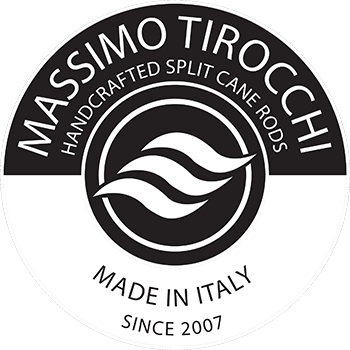A ROD IN ACTION
In this brief article, i would like to make some consideration about the way, fishermen normally look at the action of their fishing rod.
By the way…welcome back..it took quite long since my last post in the Blog…but that’s another story.
So focused on the starting point..the action of the fly fishing rod…
I don’t want treat your soul with some strange taper design concept or some other math or tech nuts..and neither I’d talk to you about the different approach of casting a low frequence rod, compared to a more reactive one. I think I wrote enough in the past about this themes.
Here I would like to increase the generally point of view about the concept of “rod action” we normally face talking about rods companies specs or simply during common discussions at the Fly Club during the long winter nights.
99% of the time, the concept of rod action in the mind of most of the fishermen is strictly tied to the casting. Few people will talk you about that rod as a complete fishing tool.
In fact he rod action concept impacts at least 3 aspect of the fishing:
- Casting of course;
- Drift managing;
- The managing of the capture.
A good fishing rod get to manage in the right way this trade off, and the fisherman should choose his/her fishing tool taking into account how those 3 aspects could fit properly his/her fishing tastes and attitude.
Let’s make some simple thought to clarify how those 3 features had to change also the way you handle the rod in different situations.
 High frequencies rods (Fast) – undoubtly this is what most of the fishermen had been looking until few years ago. Well the concept of “Fast” rod is normally directly tied to the Casting moment. People choose these kind of tools thinking about the Casting. So tight loops and so on…few of these same people make some thought on how that rod will behave in the other fishing moments….managing the drifting (once your fly touched the water) and the managing of the capture, the set and the managing of the fish until the landing. An high frequencies rod will help you for sure while you’re fishing fast waters. Try to match and play with the water speed requires a reactive tool that allow you to make the mending fast enough to trik the water. Fishing chalk streams you actually don’t need that.
High frequencies rods (Fast) – undoubtly this is what most of the fishermen had been looking until few years ago. Well the concept of “Fast” rod is normally directly tied to the Casting moment. People choose these kind of tools thinking about the Casting. So tight loops and so on…few of these same people make some thought on how that rod will behave in the other fishing moments….managing the drifting (once your fly touched the water) and the managing of the capture, the set and the managing of the fish until the landing. An high frequencies rod will help you for sure while you’re fishing fast waters. Try to match and play with the water speed requires a reactive tool that allow you to make the mending fast enough to trik the water. Fishing chalk streams you actually don’t need that.
I have seen many fishermen loosing the setting of a fish or loosing the fish during the fight…and most of the times they found easily their guilty in the hooks or a refuse of the fish. Actually I think it was because the “fast” rod can easily drive you on a setting error…too hard or too soon often.

Once the fish is on, the fighting is also different if you are fishing with a parabolic or progressive taper. This is a specific topic I’d like to focus it, because it’s very important especially for Split Cane Rods.
In fact, what technically define the rod’s shoulders, are some points along the taper of the rod, where, under some forces the rod will make its bellies. Is commonly reknown that, in high frequency rods, there is a shoulder very close to the tip end of the rod. At some point in the last 20/35 cm there is a should of the rod. Now maybe it’s more clear why, fishing an high frequencies rod doing high sticking while landing your rod is not a good idea. Differently, if your’re fishing a “belly rod” there will be a big bend more or less in the middle of the rod, and this is also why these kind of rods will support nicely also some high sticking. Probably they will pay some in term of casting and drifting mending fishing on fast waters.
Don’t get me wrong, I’m not a fan of high sticking pose, also in the Belly rods, I see their suffering while forcet to bend in that nasty way, but now you know that with some kind of rods you can do some of it and with some other rods better you avoid to do it.
I personally let my rod working on the casting plane as much as possible, and of course I often turn up side down my rod to compensate the stress on the fibers (stretched and compressed and viceversa).
I hope these few raws concept help expecially the beginners to have a more wide vision of the facts, while they are going to choose a new fishing rod.
